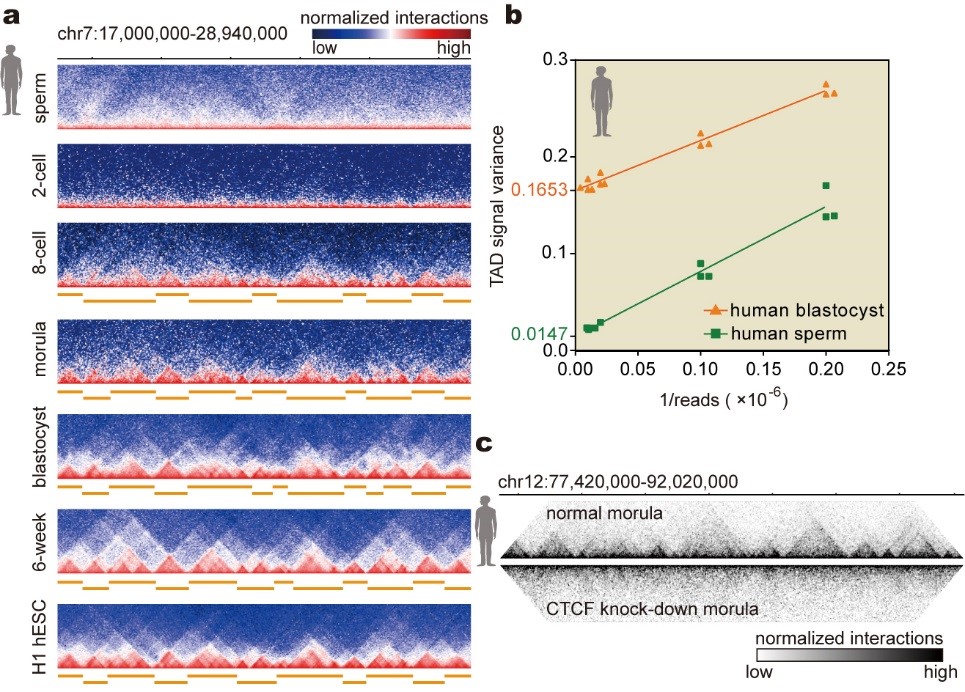
In a study published in Nature, the research groups led by Dr. LIU Jiang’s lab from Beijing Institute of Genomics (BIG) of the Chinese Academy of Sciences and Dr. CHEN Zijiang’s lab from Shandong University uncovered the mysteries of chromosome structures in human sperm and embryos.
There are 23 pairs of chromosomes within a human cell and DNA is compressed and properly packed into a three-dimensional (3D) structure within the crowded nucleus. Human individual development starts from a fertilized egg, experiences the embryonic stage and gradually develops into a complex organism containing hundreds of distinct cell types and organs. Rich epigenetic information is coded in 3D chromatin structure in human embryos.
However, what happens to the 3D chromatin structure after the fertilization in human embryos and which key factors can affect chromosome structure dynamics remain unknown. Moreover, sperm is so special with distinct morphology and functions from other cells, it is unclear how chromosomes are compressed and folded in human sperm.
In this study, the scientists applied the optimized Hi-C method in human sperm and early embryos by using as few as 50-100 cells to map 3D chromosome structures. They revealed the key role of CTCF protein in establishing chromatin structure in human embryos.
The topologically associating domain (TAD) is the basic unit of 3D chromosome structures. Unlike mouse sperm, human sperm cells do not express the chromatin regulator protein CTCF and their chromatin does not contain TADs. After fertilization, both the TAD structures and A/B compartmentalization undergo gradual establishment during embryonic development.
In the first two days following the fertilization in human, the embryo genome almost expresses no genes until 8-cell stage at which zygotic genome activation (ZGA) occurs and embryo genome starts expressing new genes.
Remarkably, different from that in mouse or Drosophila embryos, blocking zygotic genome activation (ZGA) can inhibit TAD establishment in human embryos. Besides, the expression of CTCF has a booming increase from a limited expression level during ZGA and TAD organization is significantly reduced in CTCF knock-down embryos, suggesting that CTCF expression is required for TAD establishment during ZGA in human embryos.
The scientists uncovered that CTCF play a key role in the establishment of 3D chromatin structure during human embryogenesis. This study made a further step towards the comprehensive understanding of human embryonic development.

The dynamics of 3D chromosome structures in human sperm and embryos (Image by LIU Jiang's group)

86-10-68597521 (day)
86-10-68597289 (night)

52 Sanlihe Rd., Xicheng District,
Beijing, China (100864)

